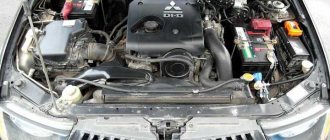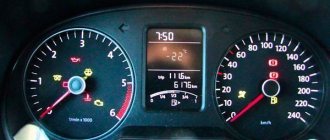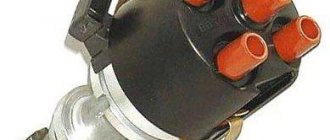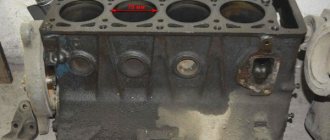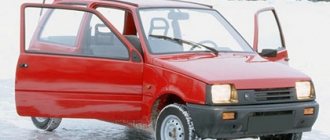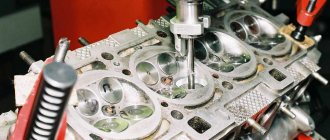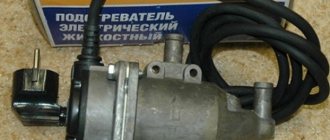Let's start with the fact that over the past ten years, the diesel engine in passenger cars has become a worthy alternative to gasoline counterparts for a number of reasons. At the same time, among the main advantages is significant fuel economy due to better efficiency and other positive qualities of engines of this type.
However, this type of engine is also not without its drawbacks. The main problem of all diesel engines in modern cars without exception is the vulnerability of the sensitive fuel system, as well as the difficulty of cold starting. It should be noted that certain knowledge allows you to avoid a number of similar troubles during the operation of a diesel engine.
In this article we will talk about what a novice diesel driver needs to know about the features of engines of this type, as well as how to start a diesel engine in cold weather and do it correctly with minimal damage to the internal combustion engine and other powertrain systems.
Why is it difficult to start a diesel engine in winter?
A drop in ambient temperature below 0°C causes the oil to thicken, fuel to evaporate less quickly, and the battery to discharge faster. In addition, diesel fuel tends to become waxy in the cold, and because of this, difficulties arise with pumping through the power system.
This problem especially often arises in the off-season, when daytime temperatures are still quite high, and at night the thermometer drops to negative levels. If the car owner has not changed the fuel to winter fuel and continues to drive on summer diesel fuel, this can lead to a typical situation - in response to turning the ignition key, the engine shows no signs of life.
The reason may be not only the inattention of the driver, but also the dishonesty of the gas station owners. After all, winter diesel fuel is more expensive, so dishonest sellers are often in no hurry to change it before stable frosts hit and sell summer diesel fuel at an inflated price. The problem also lies in the fact that it is impossible to identify a forgery based on organoleptic analysis alone - the fuel does not differ either in appearance or smell.
Mistakes of novice drivers
There are many of them, but typical ones can be identified:
- The use of ether and other means for a quick start. This is a very harsh method of reviving engines, suitable only for massive, outdated diesel engines. A clear non-compliance of such fuel with the requirements, and with a deviation of important characteristics not by a percentage, but several times, can lead to breakdowns of parts and even a fire. Moreover, you cannot saturate the air filter with anything.
- Rotate the starter for ten seconds or more. At the end of such a protracted attempt, the engine can barely crank over; there is no point in destroying the battery. You need to pause, allowing the starter and battery to recover.
- Incorrect operation with glow plugs. It is better to understand the algorithm for turning them on on a given car, understand how they work and what they are needed for, and then control the process consciously and without errors. Winter startup is mainly determined by these modest devices.
- Attempts to deceive fate by “finishing” summer diesel fuel. Paraffinization will begin already at a few degrees below zero, and its consequences will force you to stop using the car for a long time. And belatedly adding antigel to the tank will not help, it will not be able to mix with the frozen fuel.
If handled correctly, diesel will not create problems; just look at the vehicle fleet of the northern regions; all freight transport there uses these economical engines. And if you are not careful, even a gasoline engine will not start in severe frost.
How to start a diesel engine correctly in winter
The owner can insure himself against seasonal troubles in several ways:
- using a heated garage or parking lot during the cold season;
- installation of pre-heating systems on the engine and fuel filters;
- using various additives.
Warm parking does not allow the car to cool down overnight, so it will be possible to start without additional heating. Other methods require comments. The owner of a diesel car should read in detail and familiarize himself with the explanations with photos and videos, which show various options for solving the cold start problem.
Application of antigels and additives
This method is quite common, but experienced car enthusiasts are prejudiced against it. Adding such substances to the fuel tank can negatively affect both the operation of the power system and the engine itself. Additives are added to the tank before refueling so that they mix better with the fuel. In addition, it is recommended to do this at a temperature not lower than 0°C.
Attention!
If the breakdown is caused by the use of third-party additives, this may void the warranty. In this case, repairs to the internal combustion engine will be carried out at the expense of the owner.
Remote engine warm-up
One of the best solutions to the problem would be to install a pre-heater. This device will not only simplify engine starting, but also increase its service life and reduce fuel consumption. It is important that the use of such systems adds comfort, as it warms up not only the engine, but also the interior of the car.
Devices are divided into 2 types:
- autonomous;
- electric.
The easiest to install and use pre-start heaters are powered from a 220 V network. They increase the temperature of the coolant, due to which the engine heats up. This system is turned on from the remote control.
You can install the device yourself; you do not need to visit an auto center for this. As a rule, it takes about 0.5 hours to warm up the engine and interior. Such systems are inexpensive - on average from 1 to 5 thousand rubles.
Autonomous heaters are more convenient, as they can operate without access to an electrical outlet. However, their installation is more difficult and the cost is much higher. They are a chamber in the walls of which a coolant constantly circulates. As it warms up, it increases the temperature of the engine and interior, and also helps to defrost the windows in the car.
Attention!
Some modern cars with a diesel engine are equipped with a pre-installed pre-heating system. This allows you to start the engine even without glow plugs, which are not provided for in the design of the internal combustion engine.
Warming up the spark plugs
The reasons for the difficulties in starting a diesel engine at low temperatures also occur due to the difference in design compared to gasoline counterparts. There are no spark plugs, which are usual for gasoline engines; when they come into contact with them, the fuel ignites.
In a diesel internal combustion engine, glow plugs heat up and increase the temperature of the air supplied to the pistons. During diesel injection, temperature no longer matters. Ignition of the fuel mixture occurs independently - from compression and heating.
Warm up the candles as follows:
- turn the ignition key;
- wait for the signal to appear that the warm-up is complete (in some cars the indicator goes out);
- pause until there is a click, indicating that the voltage supply to the spark plugs has stopped;
- repeat the procedure 2-3 times;
- for the last time, without waiting for the sound of shutdown, they start the engine.
Attention!
The starting problem may be due to faulty glow plugs. Owners need to remember that the failure of one, as a rule, leads to the fact that others fail after it, so it is necessary to check their condition before the trip.
Lighting method
Exposure to low temperatures causes the battery to discharge faster than usual. The safest way to start the engine in this case is to use a jump starter. If it is not there, you will have to resort to the old method, calling on a “donor” for help.
However, when using this method, you should remember that it is not safe. So it should only be used as a last resort. And be sure to remember that you cannot:
- “light” a car with diesel fuel from a car with gasoline;
- do this at temperatures below -25°C;
- take as a donor a car with a smaller engine capacity.
Attention!
It is strictly forbidden to try to start the car if the electrolyte in the battery is frozen
What to do if the diesel engine does not start
If the power unit worked normally, but after a cold spell it did not start even after warming up with spark plugs, then you should check the glow plugs themselves, the condition of the fuel, as well as the air and fuel filters.
In some cases, it turns out that glow plugs require replacement. Also, if the air filter is dirty, there may not be enough air, and thickening of the fuel or contamination of the fuel filter leads to a lack of fuel.
We also recommend reading the article about why diesel is bad. From this article you will learn about possible reasons for difficulty starting a diesel engine after the power unit has warmed up.
By the way, on engines with high mileage, failure to start may indicate a decrease in compression due to general wear of the CPG. In this case, the engine must be disassembled, defective and repaired.
How to start a diesel engine in winter after a long period of inactivity
If, when you turn the key into the ignition, the engine does not start even after 3 attempts, it is better to stop them so as not to aggravate the situation - this can damage the starter or completely discharge the battery.
You will have to act almost the same as when starting a gasoline engine, but with some differences and nuances:
- the clutch is fully depressed;
- turn the key and wait for the glow plug indicator to go out;
- turn on the high beam headlights to warm up the engine;
- turn on the ignition, holding the key for 10-15 s.
If the engine starts, lightly press the gas pedal and let the car run for a while. That is, standard warming up takes place, as is the case with a gasoline car.
Refueling
One of the features of operating diesel engines of any type is meticulous attention to fuel quality. Experts advise checking even fuel from branded gas stations yourself.
The main enemy of a diesel installation is the presence of water in the mixture, which can provoke corrosion in the fuel equipment. To avoid this, it is recommended not to fill the fuel directly into the tank, but to put it in cans and let it settle so that possible sediment and impurities have time to sink to the bottom.
A simple way to check the mixture for the presence of water is to add potassium permanganate crystals to a test portion collected in a transparent container. If there is water around them, colored stains immediately form.
Another important criterion is the absolute transparency of the mixture. Any cloudiness, especially in winter, may indicate the initial stage of crystallization of paraffin, which easily clogs fuel filters.
Why you can’t start a diesel engine in winter “from a pusher”
This method is undesirable not only in the cold season, but also in the summer. Modern diesel passenger cars do not handle jerks well. And in a frozen state they are even more sensitive to mechanical damage. When using this method, there is a high risk of bending the valve stems or tearing the actuator. As a result, expensive repairs will be required.
To avoid difficulties with starting a diesel engine in cold weather, it is recommended to leave the car overnight in a warm parking lot and be sure to monitor the condition of the spark plugs and the battery charge level. Paying close attention to your car will help you avoid most problems.
What absolutely should not be done
Some drivers consider starting a sleeping engine by towing. We do not recommend doing this as it is very risky. With such a start, the acceleration angle of the rotating flywheel will be greater than with a normal start using a starter.
In modern passenger cars, the timing belt drive will jump forward after several teeth or simply break. If the timing chain is made of metal, it can stretch. Be that as it may, when starting the engine by towing, there is a great possibility of disrupting the correct arrangement of the elements of the gas distribution mechanism, pistons and cylinders. Repairing pistons and valves can cost you a fortune later on.
Advice: if towing is the only and inevitable option, then engage a higher gear, third or fourth. In this case, at least to some extent, increased shock loads on timing parts can be avoided.
Service
The specifics of operating diesel engines imply scrupulous compliance with all manufacturer's requirements, any violation of which may ultimately lead to the need for expensive repairs. Recommendations common to all power plants of this type include:
- Timely replacement and quality control of oil. Experts advise carrying out this procedure even more often than the service interval prescribed in the manual. This recommendation is due to the unstable sulfur characteristics of Russian diesel fuel. As a conditional interval, you can focus on a mileage of 7000 km? 7500 km.
- Timely replacement of the timing belt. In this case, it is recommended to follow the same principle as when changing the oil. For many engines, the permissible belt mileage reaches 100,000 km, but it must be taken into account that we are talking about practically sterile conditions, which are fundamentally unattainable on domestic roads. The breakage of a belt that has worn out prematurely always means destruction of the cylinder head, the repair or replacement of which costs a significant amount.
- Monitoring the cleanliness of the fuel system. It is recommended to replace the filter at least every 10,000 km, and to regularly drain the sediment that accumulates in the sump from the filter itself. It is advisable to wash the fuel tank twice a year, removing it from the car. Failure to comply with these requirements may result in failure of the injectors and fuel pump.
Faulty injection pump and injectors
If the pump breaks down, it is impossible to create the required pressure in the fuel system. If there is a partial malfunction, the diesel engine will “sneeze.” But there is another important point here. As a rule, most injection pump designs have a belt drive. This is what needs to be checked initially. The belt may fall off or break.
The second point is the pump fuses, which can blow out, for example, due to unsuccessful (unprofessional) repairs. In such cases, diesel is bad.
injection pump


